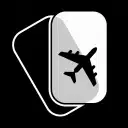How You Can Avoid Tarmac Delays through Private Jet Charter
Commercial travelers experience major frustration when they have to spend extra time at the airport due to cancelled airline flights, flight delays or being stuck on the tarmac. Unfortunately, most frequent commercial fliers have simply come to accept that their travel schedules will be periodically disrupted by these delays. This is understandable considering the fact that major carriers hit a record number of three-hour-plus tarmac delays in October 2011. Although these lengthy delays exceed federal limitations, no fines have been issued thus far.
Cause of Tarmac Delays
By far, the largest number of flight delays involve either maintenance or weather incidents. There are also a number of commercial flight delays caused by completely unrelated issues. A delay caused by the crew that isn’t related to maintenance or mechanical issues is a possibility. Regardless of the type of delay, they all lead to the same things: postponed boarding, cancelled flights, and passengers stranded on a plane on the tarmac. They also result in very frustrated and inconvenienced passengers. Of course mechanical issues or crew delays can occur anywhere and anytime. Every area of the country also experiences weather-related flight delays at some point. Just some of the causes for tarmac and general flight delays/cancellations in 2011 included snow events in Texas and the Northeast, big storms in Chicago and New York, hurricanes in the Caribbean, and high wind conditions that forced diversions for planes bound to Los Angeles. Additional circumstances that can cause tarmac delays are TFRs, or Temporary Flight Restrictions. These are often put in place by the FAA on jet charter flights to sporting events such as the recent Super Bowl in Indianapolis. The FAA placed a TFR that prohibited air traffic starting two hours before the game and extended two hours following the event. These temporary restrictions on aircraft takeoff can certainly cause lengthy tarmac delays regardless of where they occur. This is especially true when they happen without any notice whatsoever, unlike a well-staged event planned many months in advance like the Super Bowl. The added flexibility of takeoff and landing destinations available to private jet charter consumers in comparison to the limited options of commercial travelers can greatly reduce this inconvenience, however.
Federal Rules
Because of the increasing number of tarmac delays experienced by commercial airlines and other basic customer service issues, the Department of Transportation (DOT) implemented new regulations relating to flight delays in April 2010. These rules indicate fines of $27,500 per passenger against any airline that leaves a plane stranded on a tarmac for more than three hours for domestic flights and four hours for international travelers. Not surprisingly, the airlines have vigorously attempted to block this rule since its conception. In November 2011, the first fine of $900,000 was announced, levied against American Eagle for tarmac delays at Chicago’s O’Hare airport during thunderstorms the previous May. However, there have already been a significant number of occurrences where no fines whatsoever have been issued. Because of this lax enforcement of the rules, lengthy tarmac delays still occur on commercial flights. In a recent example, passenger Brent Stanley of Chicago was stuck on an American Airlines flight home from Paris for more than seven hours when a snowstorm struck Bradley International Airport in Connecticut. “They were completely unprepared,” Stanley says when describing his travel nightmare.
Passenger Frustrations
Passengers have few options when stranded in a plane that is parked on the tarmac. They must be updated on the status of the delay by the pilot captain once every 30 minutes when sitting aboard an aircraft parked on the tarmac, but this offers little solace to those stuck on the plane. Regulations also require airlines to provide water and food to passengers after sitting on a plane for two hours without being able to deplane, unless there are safety or security issues surrounding the incident. In these cases, even these minimum requirements do not apply. Regardless of the rules, long delays can still create shortages of water, food, and fresh air, along with the steadily increasing frustrations of uncomfortable passengers. The airline must also provide functioning lavatories and medical attention to any passengers in need. The instances where these most basic services could not be provided — the nightmare scenario — have been widely circulated in the media.
Numerous Advantages of Private Jet Charter and Stratos Jet Charters
Some airports are better equipped to handle these flight delays than others. Slot-controlled airports such as O’Hare, JFK, LaGuardia or Washington National have much more difficulty in rescheduling flights, which causes delays to be far more disruptive to their operations. As a result, these airports wish to avoid deplaning a flight at all costs, leaving passengers on the tarmac as long as they possibly can in an attempt to continue the flight. If they do actually come back to the gate, passengers usually have reduced options to utilize other planes, which are often already filled. Luckily for jet charter consumers such as those of Stratos Jet Charters, these issues which face commercial travelers are almost unheard of in their own flying experiences. First, the ability to deplane is a very simple procedure for jet charter passengers except in the most extraordinary of circumstances, and the much higher level of on-plane amenities and personalized service make any possible delays a far more comfortable experience. Another huge advantage available to jet charter consumers is the use of smaller private and regional airports. The reduced traffic at most of these facilities can typically avoid tarmac delays completely, and provide the opportunity to takeoff almost immediately once issues are resolved. And when flight delays are due to mechanical or maintenance issues, there are always additional aircraft options available to Stratos Jets clients. Our experienced private flight advisors will work to secure you an alternate aircraft immediately if the need should arise. Your Stratos Jets agent can also provide other options that use alternative airports that aren’t experiencing inclement weather or other delay conditions, and arrange ground transportation for you. Unlike commercial travel, where you are essentially on your own and at the mercy of the airline, with Stratos Jet Charters you always have a personal representative working on your behalf. Your agent will work diligently to ensure your timely and safe arrival at your destination, with the least amount of inconvenience to you and your travel party in the unlikely event of a delay. This assistance can be invaluable to you and your organization when critical timelines, deadlines or vital business meetings are on the line. By working with Stratos Jets, you can avoid the infuriating headaches, frustration and inconvenience caused by tarmac delays and flight delays. In other words, Stratos Jets can provide you with the travel experience that you deserve, each and every time.
Are you ready to book your Los Angeles to Miami charter flight yet?
Our friendly, expert air charter agents are here to answer questions or start your quote today. Don`t wait, call now and we'll get you on your way to your destination!
Call 888-593-9066










